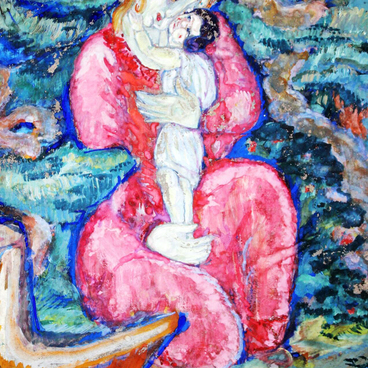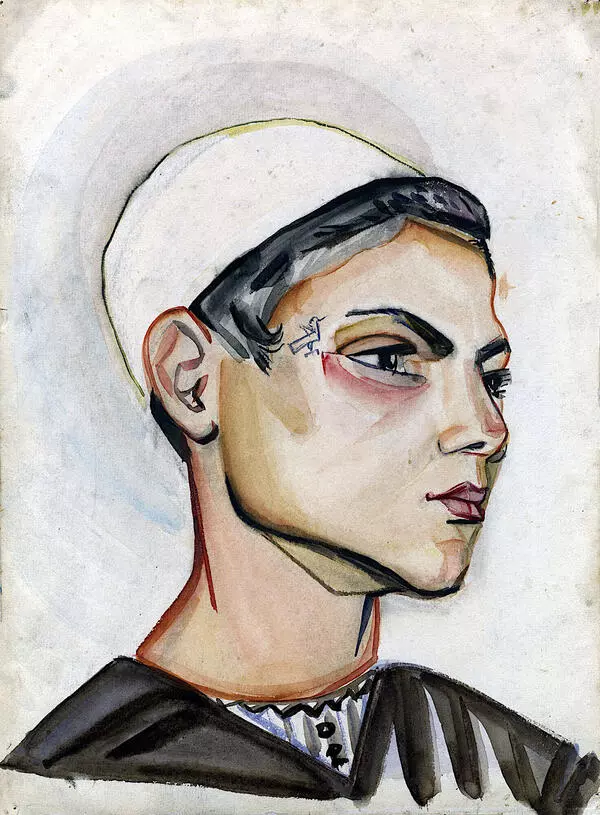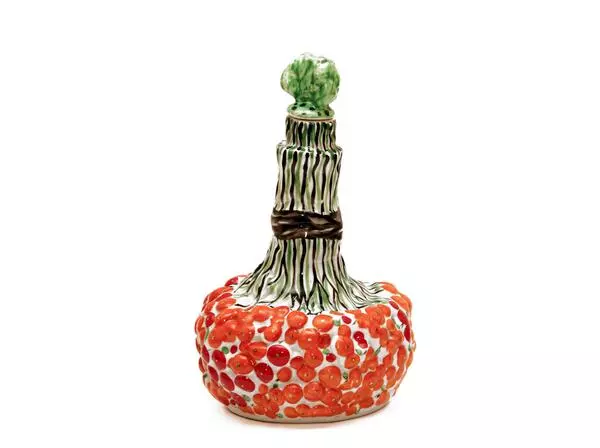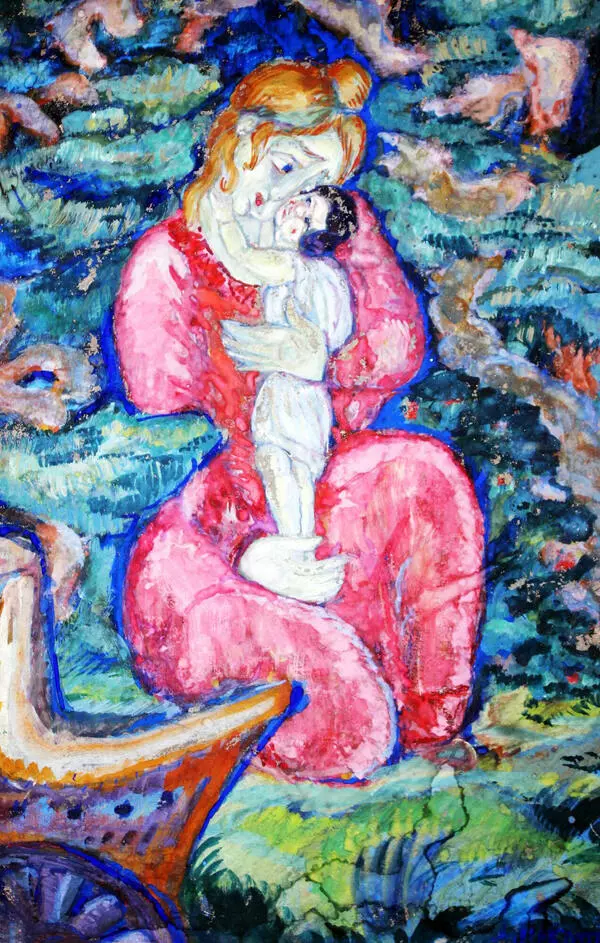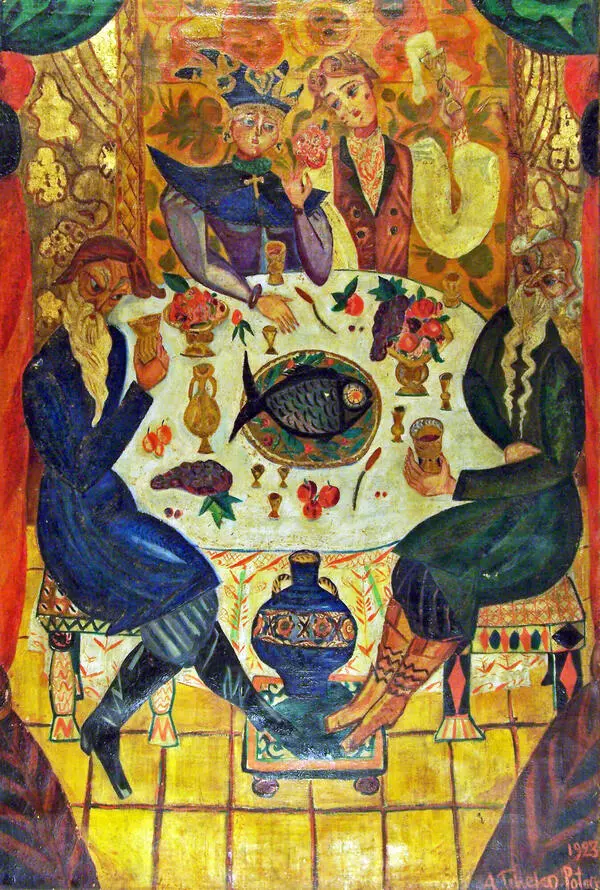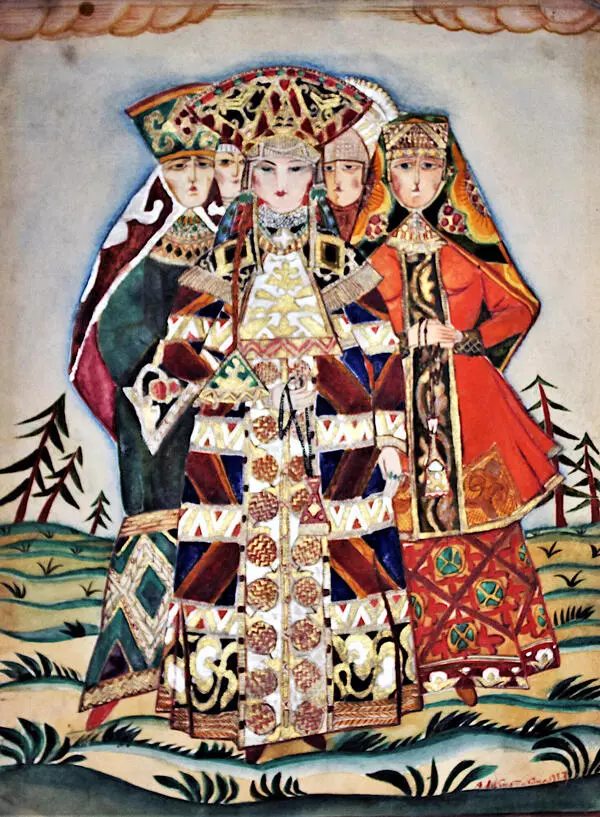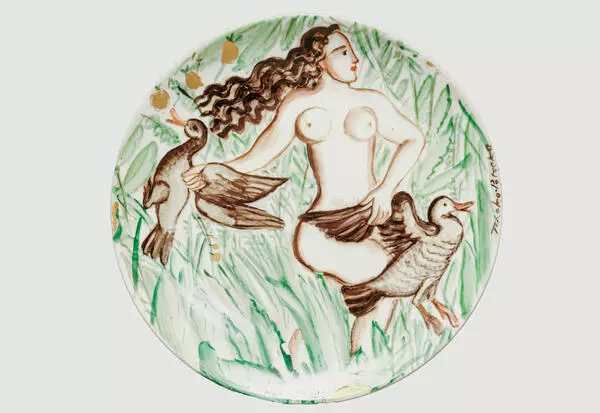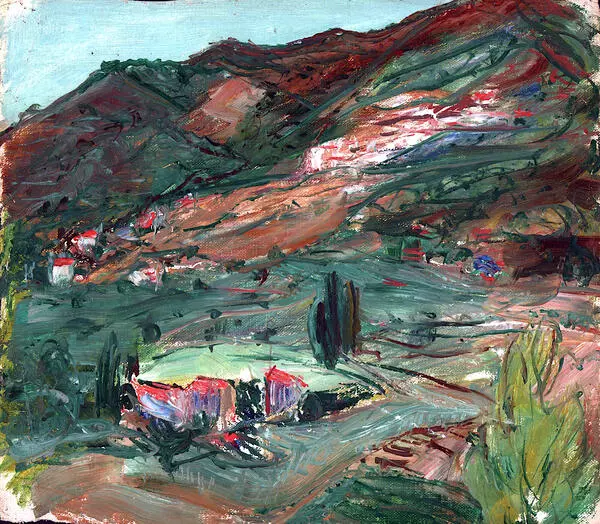The drawing “Berendeyan Woman” is a costume sketch created by Alexandra Vasilievna Shchekatikhina-Pototskaya for the famous ballet by Igor Stravinsky “The Rite of Spring”.
Shchekatikhina-Pototskaya participated in stage design for Sergei Diaghilev’s “Ballets Russes” together with her teacher Nikolai Roerich. Some of Roerich’s sketches fade in comparison to the costumes that Shchekatikhina-Pototskaya developed herself. Roerich’s sketches are static, lifeless, and silent. Shchekatikhina’s versions, although similar in motifs, differ in that they are joyful, animated, surprisingly dynamic and “inaudibly voiced”. They are much closer to Stravinsky’s music and to Roerich’s idea of the stage design than the sketches Roerich made.
Shchekatikhina-Pototskaya was one of the most gifted students of Nicholas Roerich at the school of the Society for the Encouragement of Arts. She entered the drawing school in 1908. At that time, Roerich was reorganizing the school, which took him three years, and new principles reigned in the newly opened and transformed classrooms and workshops. Alexandra Vasilievna’s artistic style was largely formed and grew under the influence of Roerich, his creativity and personality. After graduating, Alexandra Vasilievna became Roerich’s assistant in his stage design and mural work, while in her easel works of the pre-revolutionary period, she mainly followed his aesthetics. If in easel works the tribute to the teacher prevented the artist from developing her independent style, in her decorative works one can immediately feel her originality.
The premiere of “The Rite of Spring” directed by Pierre Monteux took place on May 29, 1913 at the Théâtre des Champs-Élysées and shocked the audience. The spectators were whistling, laughing and making loud noises. To pacify the raging crowd, Diaghilev had to turn off the lights in the hall several times, but still failed to calm the people. The performance was interrupted. However, not everyone reacted this way to the new ballet. The most sensitive music lovers understood and recognized its value. One of the critics, who wrote a devastating article about the “absurdity” of the ballet, nevertheless, suddenly added at the end:
Shchekatikhina-Pototskaya participated in stage design for Sergei Diaghilev’s “Ballets Russes” together with her teacher Nikolai Roerich. Some of Roerich’s sketches fade in comparison to the costumes that Shchekatikhina-Pototskaya developed herself. Roerich’s sketches are static, lifeless, and silent. Shchekatikhina’s versions, although similar in motifs, differ in that they are joyful, animated, surprisingly dynamic and “inaudibly voiced”. They are much closer to Stravinsky’s music and to Roerich’s idea of the stage design than the sketches Roerich made.
Shchekatikhina-Pototskaya was one of the most gifted students of Nicholas Roerich at the school of the Society for the Encouragement of Arts. She entered the drawing school in 1908. At that time, Roerich was reorganizing the school, which took him three years, and new principles reigned in the newly opened and transformed classrooms and workshops. Alexandra Vasilievna’s artistic style was largely formed and grew under the influence of Roerich, his creativity and personality. After graduating, Alexandra Vasilievna became Roerich’s assistant in his stage design and mural work, while in her easel works of the pre-revolutionary period, she mainly followed his aesthetics. If in easel works the tribute to the teacher prevented the artist from developing her independent style, in her decorative works one can immediately feel her originality.
The premiere of “The Rite of Spring” directed by Pierre Monteux took place on May 29, 1913 at the Théâtre des Champs-Élysées and shocked the audience. The spectators were whistling, laughing and making loud noises. To pacify the raging crowd, Diaghilev had to turn off the lights in the hall several times, but still failed to calm the people. The performance was interrupted. However, not everyone reacted this way to the new ballet. The most sensitive music lovers understood and recognized its value. One of the critics, who wrote a devastating article about the “absurdity” of the ballet, nevertheless, suddenly added at the end:


